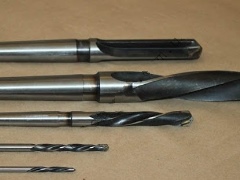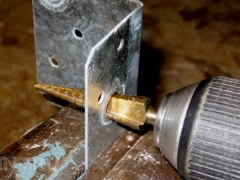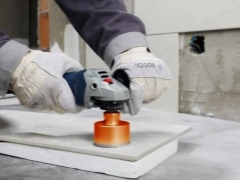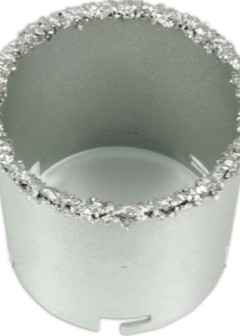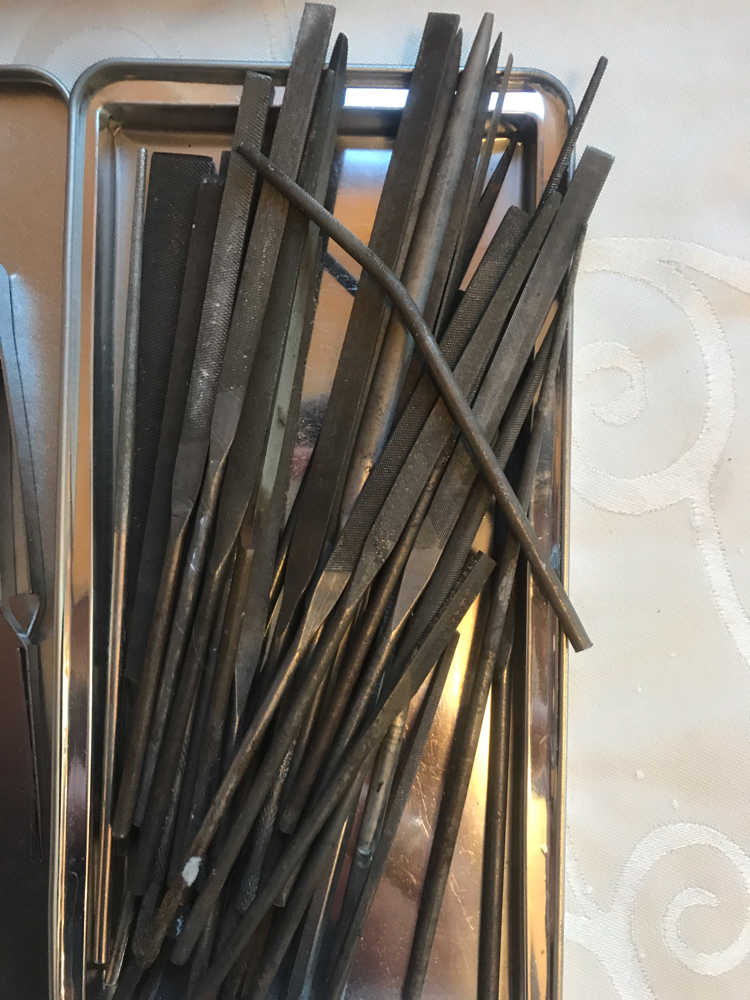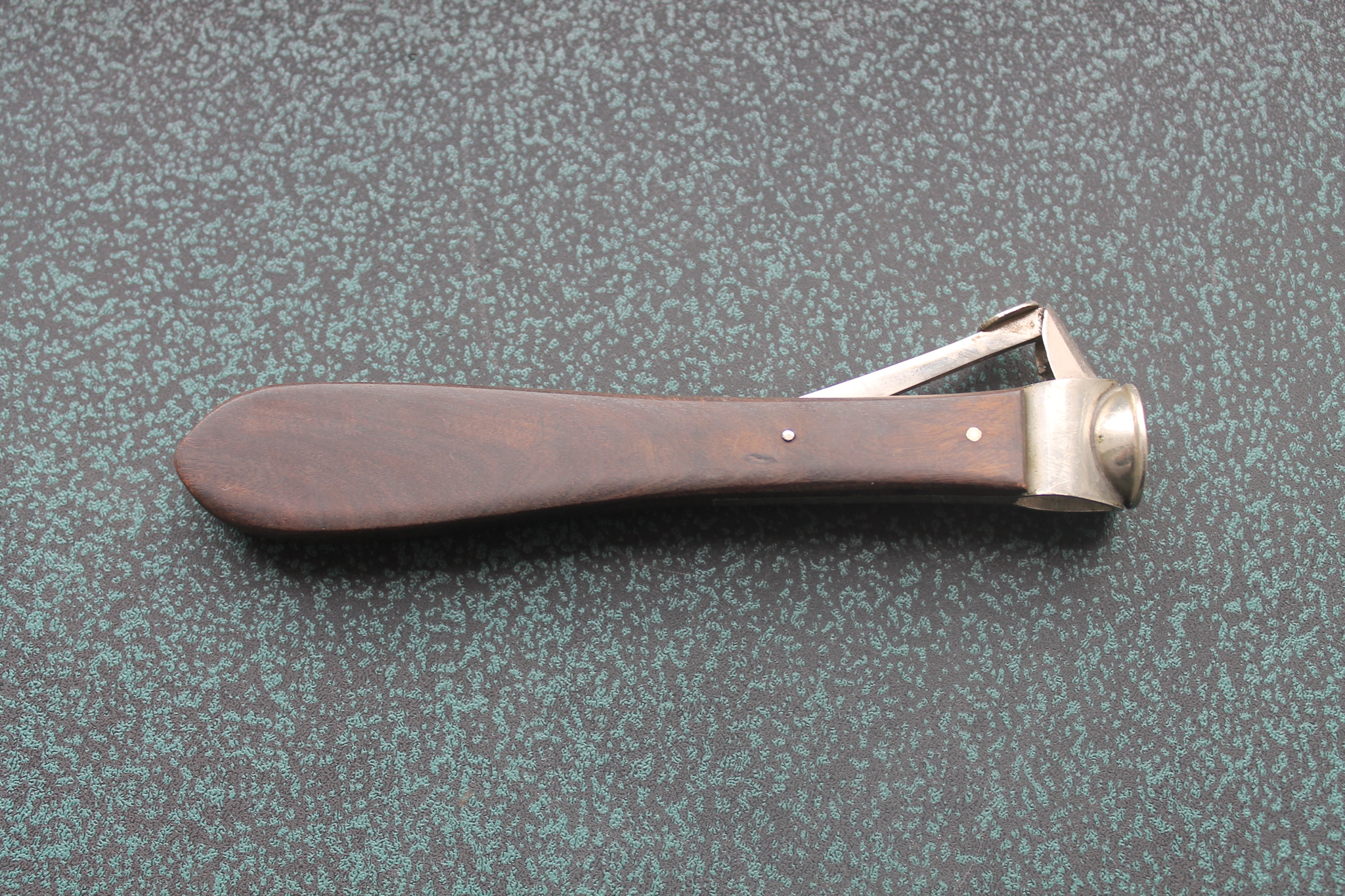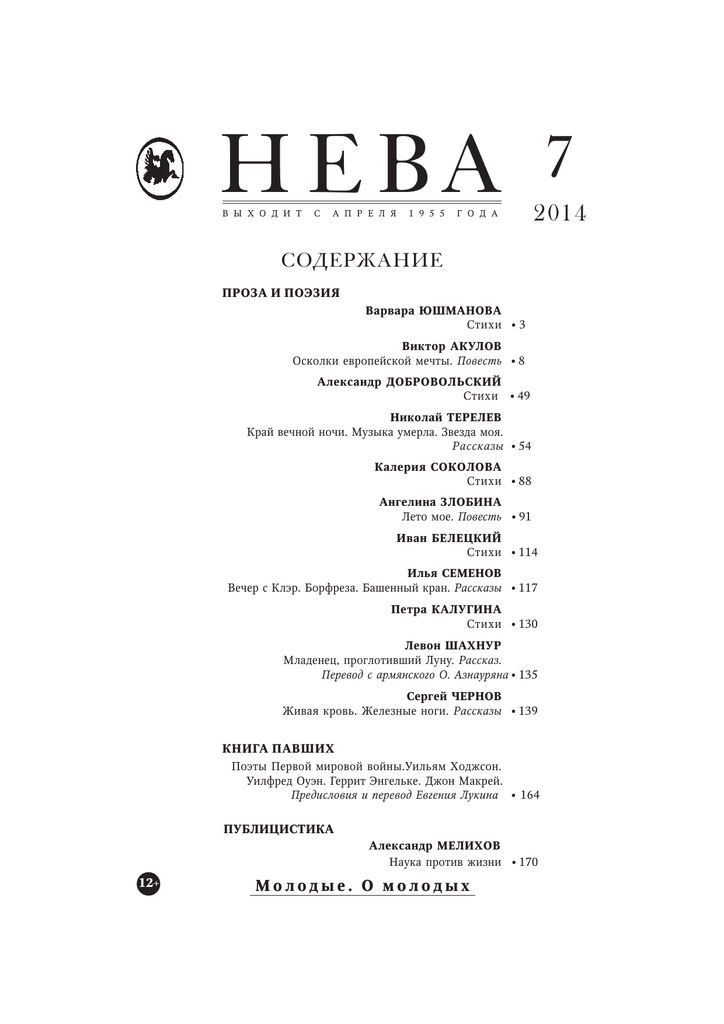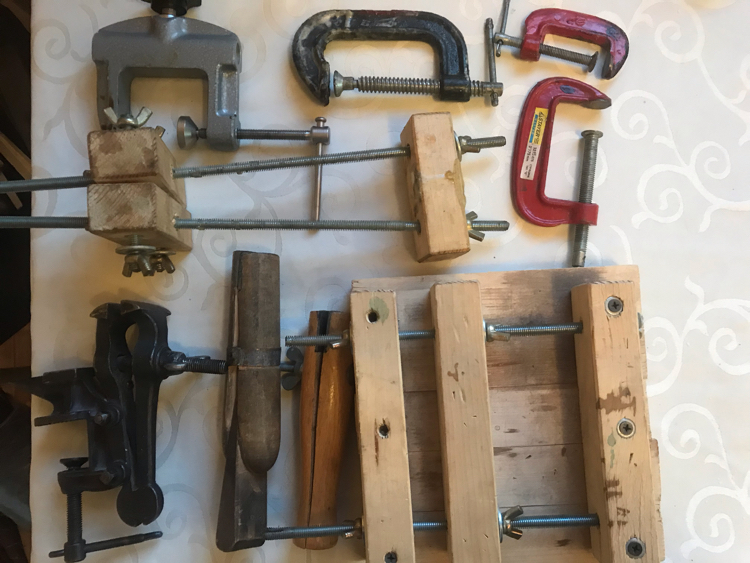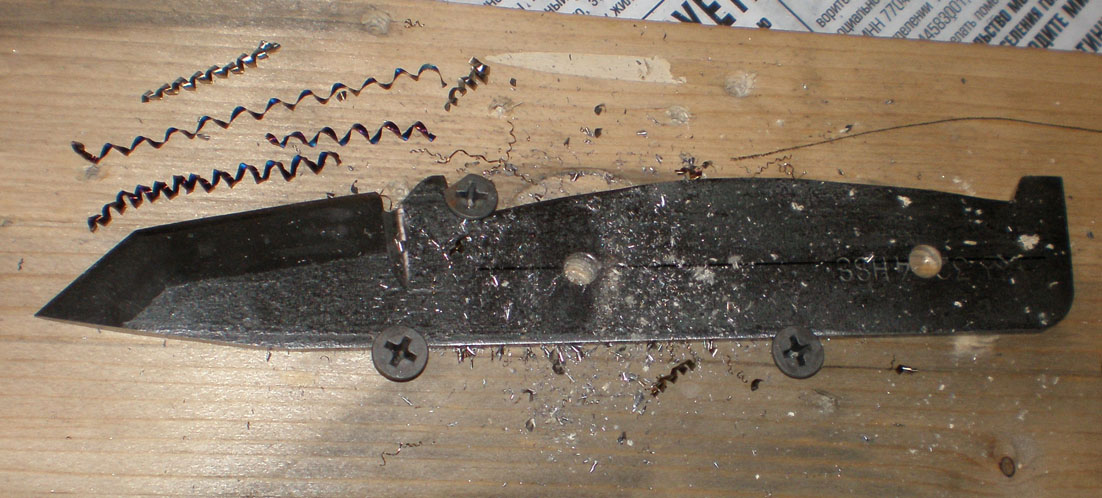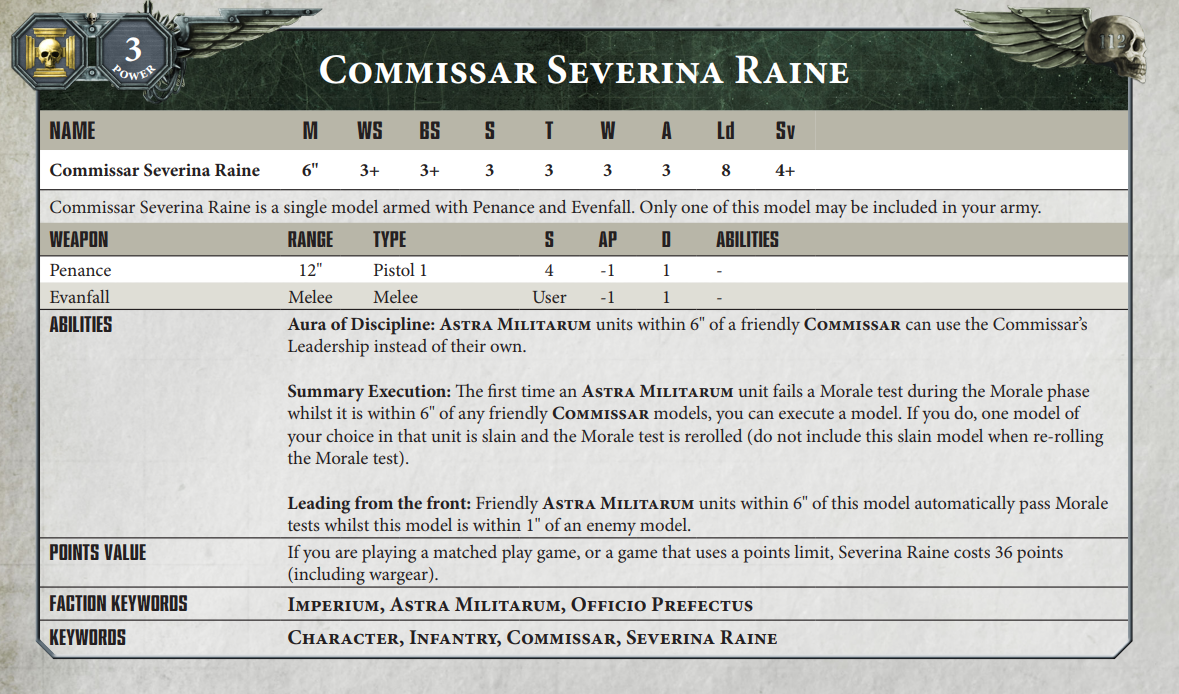Main types
The main parameter, depending on which the division of wood drills into different types is carried out, is the design of the working part. On this basis, wood drilling tools can fall into one of the following categories.
Feathers
Drills of this type are used to make holes in wood with an average diameter of up to 25 mm. It is advisable to use such a tool in cases where not too strict requirements are imposed on the accuracy of the geometric parameters, as well as on the quality of the holes. Among the most significant advantages of pen drills are low cost and ease of maintenance.
Crowned
Crown type tools are designed for drilling large holes. In terms of their design, wood crowns resemble a metal glass with a shank, on the working end of which cutting teeth are made. When such a drill rotates, its cutting teeth, interacting with the workpiece, cut a circle of the required diameter on its surface.
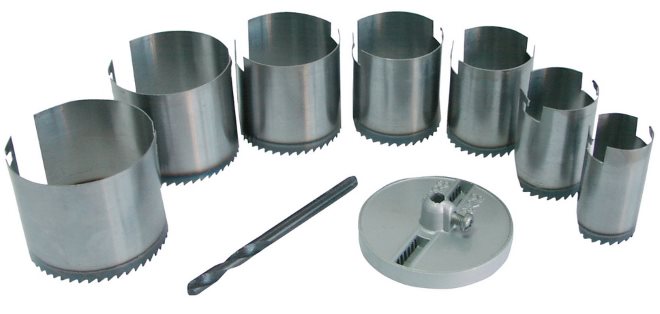
Set of crowns for wood
Spiral
Twist drills for wood are also called twist drills. Their working part resembles an auger. They are used for drilling small holes in wood. Due to the special design of the screw-type drills, when using them, chips are effectively removed from the processing area. The twist drill also ensures high precision and exceptional machining quality.

Twist drill for wood with cutters
Forstner drills
These are tools, with the help of which, in products made of wood, they create not through, but blind holes with a perfectly flat bottom. In addition, if you use such a wood drill with additional accessories, you can drill a square hole in a wooden product.

Many modifications of the Forstner drill are available
Milling
With the help of such tools, it is possible not only to drill wood, but also to make grooves of various configurations in wood products. Drills of this type are most often used in cases where it is required to perform complex processing of wooden parts, and in order to drill a regular hole, use a twist drill, feather or crown tool.
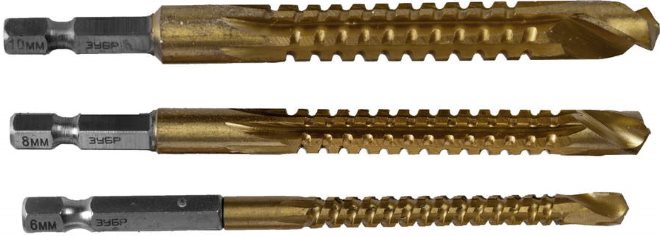
Milling drills are designed for drilling a round hole and its subsequent boring to the desired shape. Used when working with wood and thin metal
The shank of drills designed for wood processing is usually cylindrical, but manufacturers also produce them with different shank configurations. So, on the modern market you can buy drills for woodworking, the shanks of which can be:
- triangular, optimally suitable for fixing in a three-jaw chuck (torque is ideally transmitted to a tool with a triangular shank, and even very significant loads are not able to turn it in the chuck);
- hex (it is possible to install tools with such shanks in both a standard and a three-jaw chuck, but at the same time there is a very high risk of turning the drill when exposed to serious loads);
- tapered (tools with this type of shank are used mainly for equipping production equipment);
- square (rarely used shank form, which, however, provide high stability of the tool against turning in the chuck).
What distinguishes different types of drills for metal and wood
Holes in steel, copper and other workpieces, wood parts can be made with specially designed products.Such a cutting tool is made taking into account the structure and density of the material being processed and is designed for drilling in sufficiently hard layers. At the same time, almost all types of metal drills are suitable for processing wood, plastic, brick. For drilling in concrete and hard surfaces, stronger cutting options are also used.
Good metal drills in most cases remain versatile and suitable for almost any task at home.
Therefore, when choosing just such a tool, you need to more carefully select the technical characteristics, pay attention to the design features of the main elements, which include:
- cutting edge that withstands the main load when drilling holes (helical, HSS, feather, etc.);
- shank for secure fixation in the chuck;
- surface for removing chips.
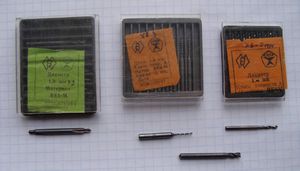 In production and in everyday life, a drilling tool is used, the advantages of which include a simple design, high centering accuracy, and an affordable price. At the same time, such models are not suitable for drilling holes of large diameters, they require periodic cleaning of processing products.
In production and in everyday life, a drilling tool is used, the advantages of which include a simple design, high centering accuracy, and an affordable price. At the same time, such models are not suitable for drilling holes of large diameters, they require periodic cleaning of processing products.
With spiral surface
When deciding how to choose a drill for metal, they often stop at the spiral tool, which is ubiquitous. It is made in the form of a rod with spiral grooves, the edges of which are sharpened. The spiral shape ensures efficient chip evacuation.
Manufacturers offer the following classification
- general purpose (cylindrical shape) with a diameter of up to 80 mm, designed for work in production or at home;
- a specific left-hand tool for drilling holes in fasteners or similar work;
- products of increased accuracy (marked A1) for drilling with strict requirements for machining errors (up to fractions of a millimeter).
You can visually distinguish products with a left or right spiral by the location of the turns.
Quality metal drills with cutting teeth
For working with hard metal, crown products are used. This type has several cutting teeth on the main surface, which allow drilling large holes. The working surfaces of such products are made from hard alloys or diamonds.
Tapered cutting surfaces
The working surface of these products is made stepped with a decrease in diameter to a minimum at the end. These drills allow you to accurately center the tool and drill strong metal with minimal deviation from the specified dimensions. Basically, these products are designed to work with small diameters. Tapered models are suitable for stepped drilling of holes of various sizes.
Alloy steel with cobalt
 These products are made from high-speed steels. The addition of cobalt provides high strength characteristics, resistance to thermal effects, deformation under mechanical stress. These are the best metal drills with super hard or tough structure. The cost of such products is much higher than conventional products, although the high price is fully justified by the unique capabilities of the work.
These products are made from high-speed steels. The addition of cobalt provides high strength characteristics, resistance to thermal effects, deformation under mechanical stress. These are the best metal drills with super hard or tough structure. The cost of such products is much higher than conventional products, although the high price is fully justified by the unique capabilities of the work.
Carbide inserts
To work with products of large thickness made of especially hard metals allow products from tool steel with carbide-alloy plates at the end. The cutting surface of such models is sharpened during manufacture and retains strength and sharpness throughout the entire operation. Products with carbide alloy inserts are characterized by wear resistance and durability.
Manufacturers
Another detail, thanks to which you can choose the drill, the name of the company. There are quite a few of them on the market, but we would like to dwell on only three of the most interesting from our point of view. Bosch is a well-equipped manufacturer, great experts in the industry.

Unlike other tools of the brand, it is in the equipment of the Practice that they understand in detail.Each group of drills from this manufacturer has detailed descriptions and recommendations for their use. If you are poorly guided in drills, then the "Practice" instructions will greatly help with this.
VIRA may not be the most well-known brand of rigs, but it is worth paying attention to. In the category of drills, VIRA presents several levels of quality and value. The most active category of drills is RAGE
They combine affordable price, high performance and versatility. The VIRA range of products featuring excellent detailing and superior quality.
The most active category of RAGE drills. They combine affordable price, high performance and versatility. The VIRA range of products featuring excellent detailing and superior quality.
Features of choice
Professionals choose drills according to the following criteria:
- Material;
- Color;
- Marking;
- Sharpening angle;
- Size;
- Shank;
- To the manufacturer.
It is not difficult to determine them by eye, but before that, be sure to find out what type of drill you have. For example, large hole sizes will require high power low speed drills with appropriate drill bits. Additionally, note that some types of drills are used only with cooling solutions, in order to avoid burning them and the metal.
Which material is better
To use a drill in everyday life, it is better to choose one drill for working with metal of different densities. When choosing a tool for working with aluminum and steel, focus on cost.
In search of quality tools, turn to well-known brands. They are made of solid steel and are solid rolled.
Superior quality drills - solid rolled
Marking
All data about the drill is applied to its shank
Drill marking implies a certain combination of alphanumeric values and indicates:
- Drill diameter;
- Hardness of steel;
- Impurities of metals in the alloy;
- Technology and place of production.
The highest quality drills are marked by the USSR marking.
The main types of markings:
- HSS-R and HSS-G - suitable for working with cast, alloy, carbon steel up to 900 N / mm2, aluminum, cupronickel, graphite, bronze or brass alloy and cast iron;
- HSS-G Co 5 - for processing metals with strength up to 1110 N / mm2, suitable for drilling stainless steel, carbon, alloy, not heat-resistant, heat-resistant steel;
- HSS-GTiAN / TiN - drills with titanium-nitride-aluminum coating, suitable for working with cast iron, brass, cupronickel and bronze, cast steel.
There are also cobalt drills (some of the most expensive and durable types of drills, suitable for drilling hard metals) and hard metal alloys (suitable for processing thick metals, have a one-sided, sharp sharpening angle).
Sharpening angle
The sharpening angle is the angle between the edges
The sharpening angle is the angle between the edges. It is different for different types of metal. For example:
- Drills for steel have a sharpening angle of 116-140 degrees;
- To work with bronze, brass and aluminum, sharpening of 110-135 degrees is required (such drills are most common);
- For "stainless steel" - 120 degrees;
- For cast iron - 118 degrees.
What size drills are
The sizes of drills are different, but the GOST of our country sets the following parameters:
- Short (GOST 4010-77) - 0.3-0.20 mm in diameter, 20-131 mm long;
- Elongated (GOST 10902-77) - 0.3-0.20 mm in diameter, 19-205 mm long;
- Long (GOST 886-77) - 1-20 mm in diameter, 56-254 mm long.
They allow you to make holes of different depths.




